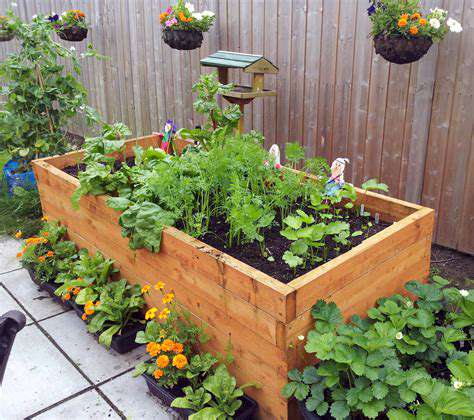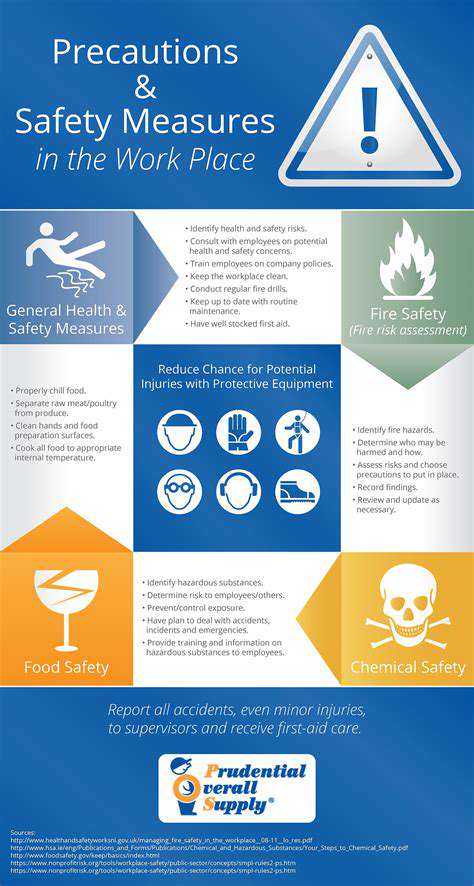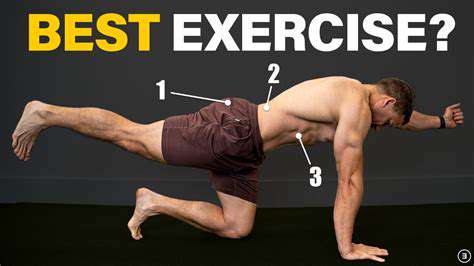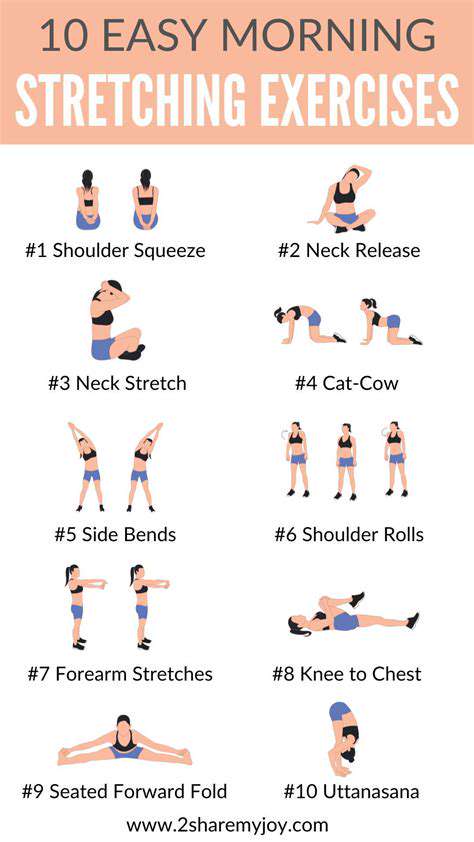Home Modifications for Fall Prevention: A Senior Checklist
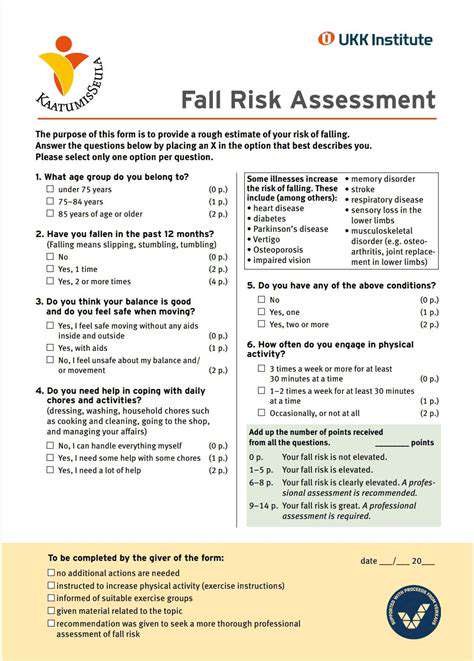
Identifying Potential Hazards
Taking the time to carefully evaluate your living space is essential for spotting dangers that could lead to falls. Many accidents happen because people overlook simple things like loose rugs or poorly placed furniture. Being thorough in your inspection today can prevent painful injuries tomorrow. Focus particularly on high-traffic zones such as hallways, staircases, and bathrooms where most slips occur.
Go through each room methodically, checking for hazards like electrical cords snaking across walkways or unstable furniture. Clutter isn't just unsightly - it's dangerous. Creating clear pathways by removing unnecessary items is one of the easiest ways to make your home safer immediately.
Evaluating Stairways and Pathways
Stairs demand special attention as they're common sites for serious falls. Test handrails to confirm they're firmly attached and at the right height for support. Examine each step for damage like cracks or loose carpeting that could catch a foot. Proper illumination is absolutely critical for stair safety, especially at night.
Check all passageways for adequate lighting. Dark corners and dimly lit hallways are accidents waiting to happen. Adding plug-in night lights or motion-activated fixtures can dramatically improve visibility when moving through your home.
Assessing Bathrooms and Kitchens
These wet areas require particular scrutiny. Bathroom floors should have textured surfaces to prevent slipping when wet. Adding support bars near showers and toilets provides crucial stability points. Quality grab bars installed properly can literally be lifesavers for older adults or anyone with mobility challenges.
In kitchens, watch for precarious stacks of dishes or appliances with dangling cords. Store frequently used items at waist level to avoid dangerous reaching or bending that could throw off your balance.
Evaluating Lighting and Visibility
Good lighting isn't just about ambiance - it's a safety necessity. Walk through your home at night to identify poorly lit areas that could hide trip hazards. Dark spots in hallways or stairwells are where most nighttime falls occur. Upgrade dim bulbs and consider adding supplemental lighting where needed.
Test all light switches to ensure they're conveniently located and functional. Having illumination available exactly when and where you need it can make all the difference in preventing accidents.
Addressing Potential Hazards in Bedrooms and Living Areas
Rearrange furniture to create clear walking paths without obstacles. Nightstands should be within easy reach of beds to prevent risky middle-of-the-night reaching. Thoughtful furniture placement reduces unnecessary movement that could lead to falls.
Secure or remove all loose rugs, and use non-slip pads underneath those you keep. Bundle up loose cords with cable organizers to eliminate tripping hazards throughout your living spaces.
Considering Individual Needs and Adaptations
Safety modifications should reflect the specific needs of household members. Those with vision problems or mobility issues require extra precautions. Customized home adjustments can mean the difference between independence and injury. Consider installing ramps, shower seats, or other assistive devices as needed.
Consulting with an occupational therapist provides valuable insights. Professional recommendations ensure your home modifications truly address your unique situation effectively.

Bathroom Safety: Creating a Secure Bathing Environment
Ensuring Slip-Resistant Surfaces
Creating slip-proof bathroom surfaces involves multiple layers of protection. High-quality bath mats with suction cups provide essential traction, but they're just the start. Look for mats made from antimicrobial materials to prevent mold growth while maintaining grip. For existing smooth floors, apply textured paint or adhesive strips in key areas like in front of the sink and toilet.
When selecting new flooring, prioritize materials specifically rated for wet areas. Porcelain tiles with a matte finish or natural stone with adequate sealing offer both safety and style. Remember that even the best flooring needs proper maintenance - clean regularly with non-slip enhancing products.
Elevated Toilet and Sink Heights
Raised toilet seats reduce strain on knees and hips by 30-40%, making them invaluable for those with arthritis or recovering from surgery. Look for models with secure locking mechanisms and built-in handles for added stability. For sinks, consider wall-mounted designs that allow for customized height adjustment during installation.
These modifications provide more than just physical benefits - they restore confidence and dignity in performing personal care tasks. The psychological impact of being able to use bathroom facilities independently shouldn't be underestimated.
Grab Bars and Support Rails
Properly installed grab bars can support up to 250 pounds when mounted correctly into wall studs. Place them horizontally at about 33-36 inches above the floor near toilets, and vertically in showers at a slight angle for optimal grip. Contrasting colors make bars more visible for those with limited vision.
Support rails should extend beyond where they're needed most - for example, continuing past the shower entrance to provide stability while entering and exiting. Consider decorative options that blend with your bathroom decor while providing crucial support.
Adequate Lighting
Layer your bathroom lighting with overhead fixtures, vanity lights, and targeted illumination in high-risk areas. LED night lights with automatic sensors provide gentle illumination without disrupting sleep patterns. Position lights to eliminate shadows in critical areas like shower stalls.
Non-Slip Flooring and Shower Mats
Modern non-slip flooring options include innovative materials like rubberized vinyl planks that mimic wood while providing superior wet traction. In showers, consider installing integrated non-slip surfaces during remodeling rather than relying on temporary solutions. For existing showers, replace worn mats immediately - their effectiveness diminishes significantly over time.
Enhancing Flooring and Reducing Clutter: A Holistic Approach

Improving Flooring Aesthetics
The right flooring selection impacts both safety and style. Lighter colored floors with subtle patterns help disguise minor imperfections while making spaces appear larger. Thoughtful flooring choices create visual continuity that guides safe movement throughout the home. Consider transitions between rooms - gradual changes in flooring height prevent tripping hazards.
Texture plays a dual role - providing necessary traction while adding design interest. Materials like cork or textured luxury vinyl offer both safety and visual warmth. Always test samples in your actual space at different times of day to assess both appearance and safety under various lighting conditions.
Minimizing Clutter
Clutter isn't just unattractive - it's one of the leading causes of household falls. Implement the one in, one out rule to maintain balance in your possessions. A disciplined approach to belongings creates safer pathways and reduces cleaning challenges. Designate specific homes for frequently used items to prevent dangerous pile-ups.
Regular safety sweeps help maintain clear spaces. Walk through your home weekly with fresh eyes, identifying and removing potential trip hazards before they cause problems. This proactive habit significantly reduces fall risks over time.
Strategic Storage Solutions
Built-in storage maximizes safety by keeping essentials accessible but out of walkways. Consider shallow shelving that doesn't protrude into rooms, with rounded corners to prevent injury if bumped. Well-designed storage transforms cluttered danger zones into organized, safe spaces.
Floating shelves at appropriate heights eliminate the need for step stools while displaying items attractively. Closed storage with doors keeps necessary items handy while maintaining clean sight lines throughout your home.
Implementing Efficient Organization Techniques
The five-minute rule - if you can do it in five minutes, do it now - prevents small tasks from becoming overwhelming clutter. Assign specific days for focused decluttering of different areas. Consistent small efforts prevent the accumulation of dangerous piles.
Use vertical space wisely with wall-mounted organizers for items like keys and mail. This keeps surfaces clear while making important items easy to find when needed.
Utilizing Space-Saving Furniture
Modern multifunctional furniture combines safety with sophistication. Look for coffee tables with lift tops that eliminate the need for side tables, or beds with integrated lighting to reduce nighttime stumbling. Innovative designs now allow even small spaces to be both stylish and exceptionally safe.
Choose pieces with rounded edges and stable bases that won't tip if leaned on for support. Furniture placement should always allow for clear 36-inch wide pathways - the minimum recommended for safe mobility.
Maintaining a Consistent Aesthetic
A unified design scheme does more than please the eye - it creates predictable visual cues that enhance safe navigation. Consistent flooring transitions and color schemes help those with cognitive challenges move confidently through spaces. Cohesive design isn't just beautiful - it's an often-overlooked safety feature.
Use contrasting colors to highlight elevation changes or steps, but maintain an overall harmonious palette. This balance between visibility and aesthetic appeal creates environments that are both safe and inviting.

